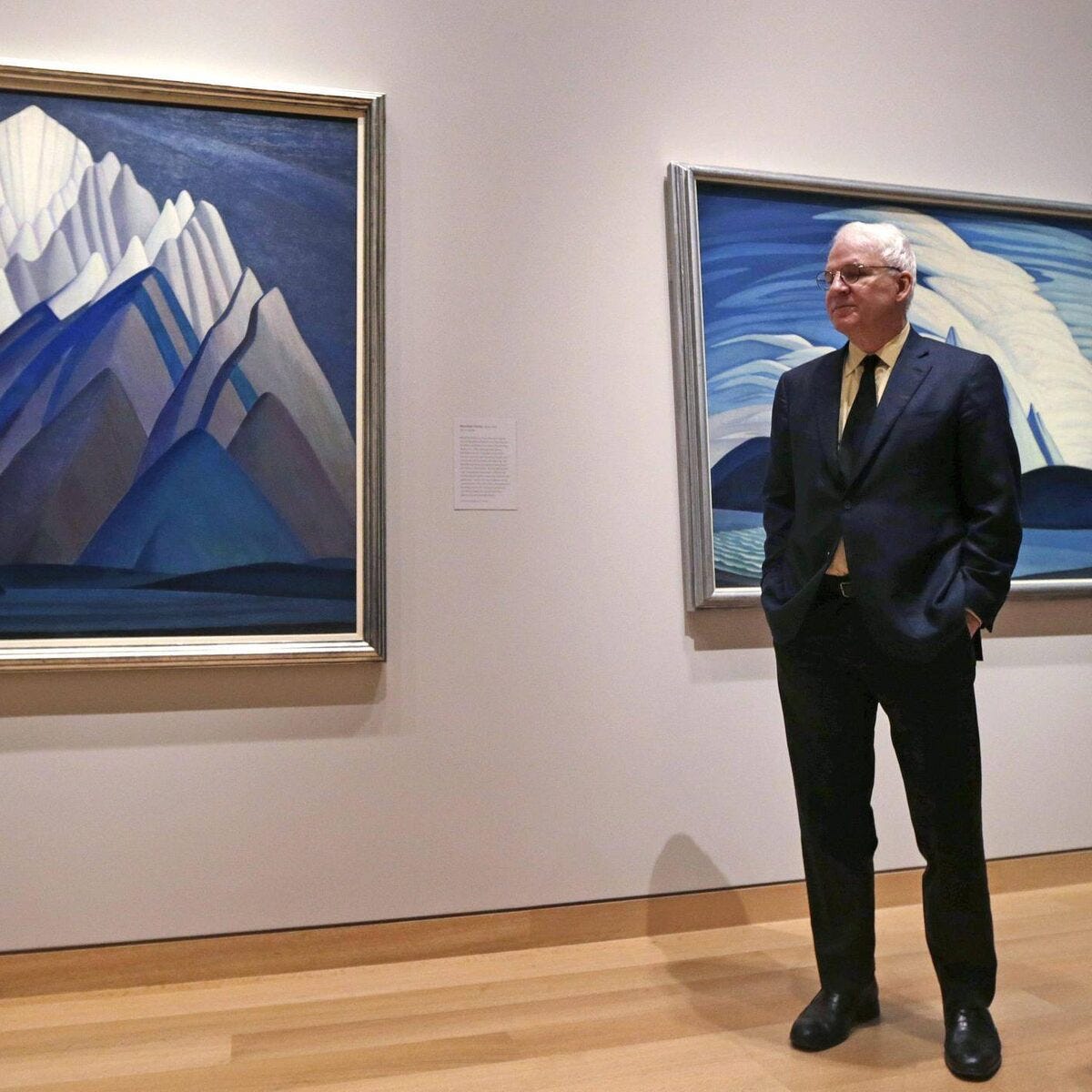Is there a difference between handpicked and curated?
Thoughts on the curatorial "celebrity effect."
The title of curator in the art world is one that is hard earned. Relationship building, studio visits, and navigating institutional mandates and budgets only scratch the surface of what curators do. They are a pillar of the arts ecology, creating dialogue and fostering critical insight into art and the world we live in. So what happens when celebrities try their hand at curation?
From April 28 to May 6, Martha Stewart has stepped out of her garden and into the gallery – well, the virtual gallery anyway. Pharrell Williams’s auction platform Joopiter is hosting The Contemporary Take, guest curated by Stewart and described on the site as spanning “blue-chip and emerging artists, showcasing diverse perspectives and rare works across painting, sculpture, and mixed media.” Artists include Amy Sherald, Hank Willis Thomas, Tracey Emin, Kehinde Wiley, Alex Katz, Damien Hirst, Andy Warhol, and Lynette Yiadom-Boakye, whose portrait Bark Scraper leads the auction with a $900,000–$1.2 million estimate.

Not that any of the artists included in The Contemporary Take need a boost, but the art market is not immune from the “celebrity effect.” The celebrity effect is often associated with celebrity endorsements or ownership, often leading to increased sales, value, and investor (or in this case, collector) confidence. Stewart handpicked (a better word than curated in this situation, don’t you think?) many of the works, drawing from artists she admires or knows personally. It will be interesting to see how Stewart’s celebrity effect impacts the outcome of the auction.
Maybe we can look to a Canadian example for insight.
In 2016 American comedian Steve Martin played the role of guest curator in an exhibition titled The Idea of North: The Paintings of Lawren Harris that traveled to the Art Gallery of Ontario from the Hammer Museum in Los Angeles and the Museum of Fine Arts in Boston. Martin’s goal was to use celebrity influence to introduce Harris to audiences in the United States. His curatorial journey began with personal admiration. In an interview with the CBC Martin remarked, “I thought I discovered him, then I realized Canada knows all about him.”

For the Canadian leg of the exhibition, earlier works by Harris were added and shown alongside his local contemporaries, such as the Toronto photographs of Arthur Goss, to offer something new to an audience already well aware of Harris and the Group of Seven. Yet, the celebrity effect became evident in the ways Martin’s star power attracted new audiences, especially in the United States where Harris was largely unknown, and prompted cross-border dialogue about Canadian identity and art.
All well and good. But did this celebrity effect have an actual effect on the art market?
I don’t think it’s a coincidence that the record high price at auction for not just Lawren Harris, but any Canadian artist ever, was broken in 2016. Harris’s Mountain Forms sold for $11.21 million at Heffel in November of that year. It surpassed the estimate of $3 to $5 million. I say it’s no coincidence since Mountain Forms was loaned from Imperial Oil to be included in Martin’s The Idea of North. The buyer is anonymous, and I was unable to find it in any current collections. Perhaps it was someone from the United States who bought it!

When celebrities take on curatorial roles, their impact goes beyond just drawing attention. They can shape narratives, shift perceptions, and even move markets. In Stewart’s case, the auction format and artist roster already cater to a collector base fluent in the blue-chip art world. Stewart’s name adds a layer of lifestyle branding that might nudge buyers more than it transforms the landscape. In other words, it doesn’t challenge or complicate the art itself as good curators are known to do.
Martin’s project, by contrast, introduced an underrecognized (to Americans) artist to a new (non-Canadian) market entirely. That kind of cultural bridge-building can ripple into lasting market change. And, in Harris’s case, it arguably did. The spike in value after The Idea of North wasn’t just about hype; it reflected renewed relevance and interest, maybe even from United States collectors who hadn’t previously been paying attention.
Together, Stewart and Martin highlight the power and pitfalls of the celebrity effect: it can amplify visibility and shift market dynamics, but its long-term value depends on whether it’s driven by personal passion or promotional polish. I’m not saying that Martin should quit his day job, but ultimately celebrity curation works best when it’s more than just a name on the wall and is instead backed by genuine insight, thoughtful storytelling, and a deep investment in the art itself. Then, the "celebrity effect" becomes more than a marketing tool. It becomes a mechanism for expanding value, context, and audience.




